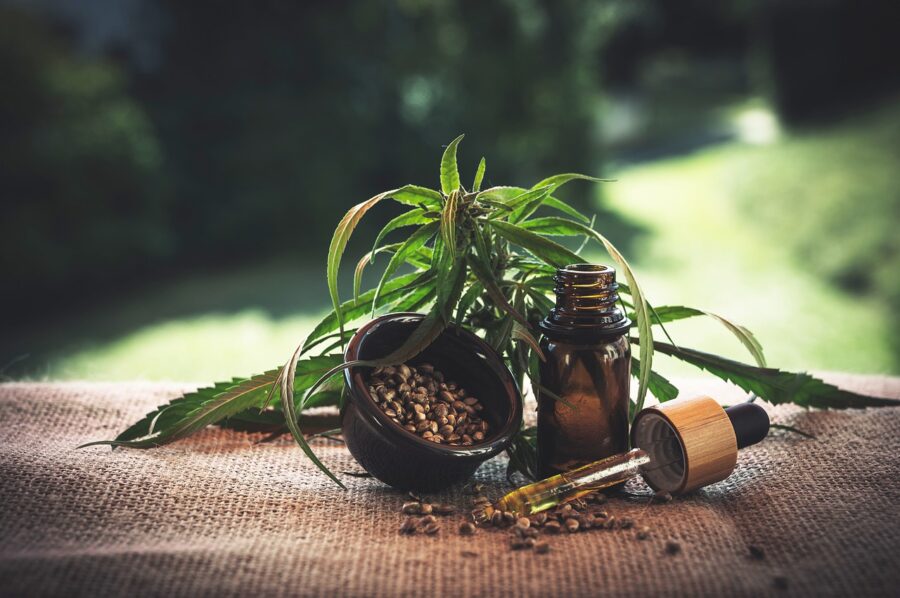Understanding THC Product Concentration

Have you been buying and trying new strains and varieties of marijuana and marijuana products lately? If so, you might be familiar with the euphoric high that some of them make you feel. Or you might have experienced unexpected adverse side effects with certain strains or varieties. This could come down to the THC product concentration.
Do you truly know how much THC and other cannabinoids are in the edible cannabis products you use?
A primary psychoactive component, tetrahydrocannabinol (THC), is the weed chemical element responsible for a euphoric high. Used interchangeably with cannabinoids, THC is just one of the 400+ compounds found in marijuana, and it is more complicated than you imagine.
This guide will help you understand what that is and how it affects you.
What is THC?
THC, the abbreviated form of tetrahydrocannabinol, is a chemical element found in the cannabis plant. Psychoactive in nature, it gives users the feeling of being high. Though THC’s chemical make-up, C21H30O2, is quite similar to CBD, they aren’t the same. CBD fights the effects of THC.
THC mimics the structure of anandamide, a natural chemical produced in the brain. The THC compound gets attached to the neurons and alters the regular brain communication that happens through neurons.
According to the National Institute on Drug Abuse (NIDA), THC affects functions like memory, concentration, pleasure, sensory and time perception, coordination, and movement. For this reason, driving or operating heavy machinery while under the influence of the drug is dangerous.
THC may have a wide range of short-term effects. Depending on the individuals, these effects may or may not be experienced. For instance, while THC elicits strong feelings of calm and peace in some, others might experience an increase in their anxiety levels. Additionally, different strains and concentrations like Delta 8 THC can also create different outcomes.
Some short-term effects of THC include:
- Elation
- Sedation
- Memory Impairment
- Pain Relief
- Hunger
- Drowsiness
- Increased Heart Rate
- Anxiety/ Paranoia
There is very little concrete evidence to support theories about the long-term effects of THC. The currently found potential long-term effects include the following:
- Anatomical Brain Changes
- Bronchitis
- Decreased Verbal Cognitive Function
- Psychosis
- Tolerance for THC
Is THC like CDB?
Though THC and CBD are natural elements found in plants belonging to the cannabis genus, they are different in many ways. An easy way to distinguish between CBD and THC is by how cannabis makes you feel. While the effects of CBD aren’t felt, THC intoxicates you. It is also one of the reasons why a majority of people use CBD for pain management.
Extracted from hemp or cannabis, both of which come from the Cannabis sativa plant, CBD products are available in various forms like gummies, supplements, gels, oils, extracts, and more.
Presently, additional research is necessary to understand the efficacy and range of CBD’s benefits thoroughly. Its popularity is ever-increasing. CBD is commonly used to manage the following conditions and symptoms:
- Epilepsy and Seizure Disorders
- Pain and Inflammation
- PTSD and Anxiety
- Crohn’s Disease
- Multiple Sclerosis
- Opioid Withdrawal
Both CBD and THC have the same molecular structure, but they differ in the atoms’ arrangement. This is the reason for their differing effects on your body. Both CBD and THC resemble the endocannabinoids in your body. Thus, they interact with your cannabinoid receptors, resulting in the release of neurotransmitters in your brain. Neurotransmitters are responsible for relaying messages between cells and play a crucial role in pain, stress, immune function, sleep, etc.
Furthermore, CBD and THC don’t feature the same psychoactive effects too. CBD doesn’t produce the euphoric feeling associated with THC but helps with depression, anxiety, and seizures. This is because THC attaches to the cannabinoid 1 (CB1) receptors in the brain, while CBD binds very weakly to the CB1 receptors with THC’s help.
THC Product Concentration
If you are like most people, you might want to understand the Cannabinoid Content Product labels on legal marijuana products. Every cannabis product is different in terms of variation and level of cannabinoids. Hence, it’s good to know how to decode the cannabis product labels to know you are consuming the right product.
Active content levels of both THC and CBD are expressed in two ways on product labels. The first reference is a base number followed by a percentage. You will find them listed as ‘THC’ or ‘CBD’ and ‘Total THC’ and ‘Total CBD,’ respectively.
THC and CBD denote the number of active cannabinoids included in the product. On the other hand, ‘Total THC’ and ‘Total CBD’ indicate the levels of active cannabinoids. ‘Total’ cannabinoid content numbers help calculate the potency of the product. However, these two content numbers will vary when buying dried cannabis while remaining the same for oil and capsule products.
Both CBD and THC Are Beneficial
CBD and THC both offer a wide array of medical benefits. They are also considered safe to consume when purchased by a legal, reputable Canadian online dispensary. But one should also keep in mind the potential side effects associated with them. It is best to talk with a qualified cannabis clinician or medical professional before using cannabis or THC products.